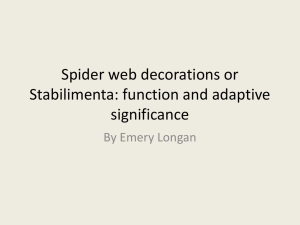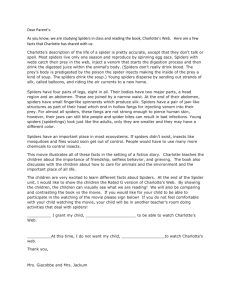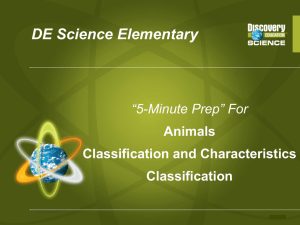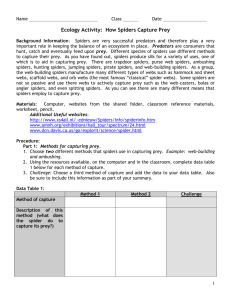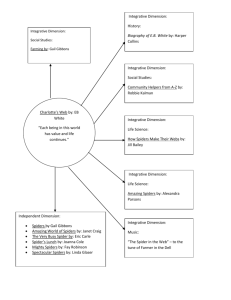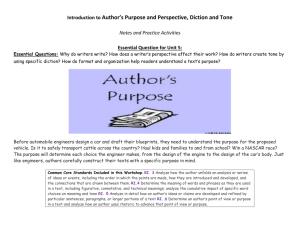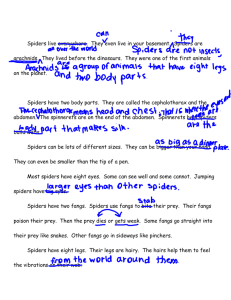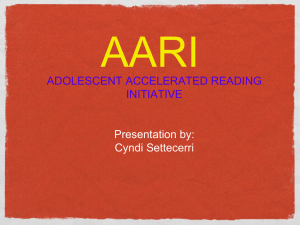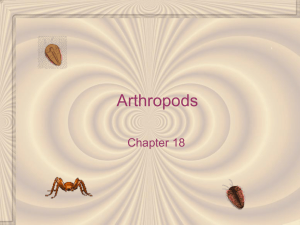David Edwin Hill, 2010
advertisement
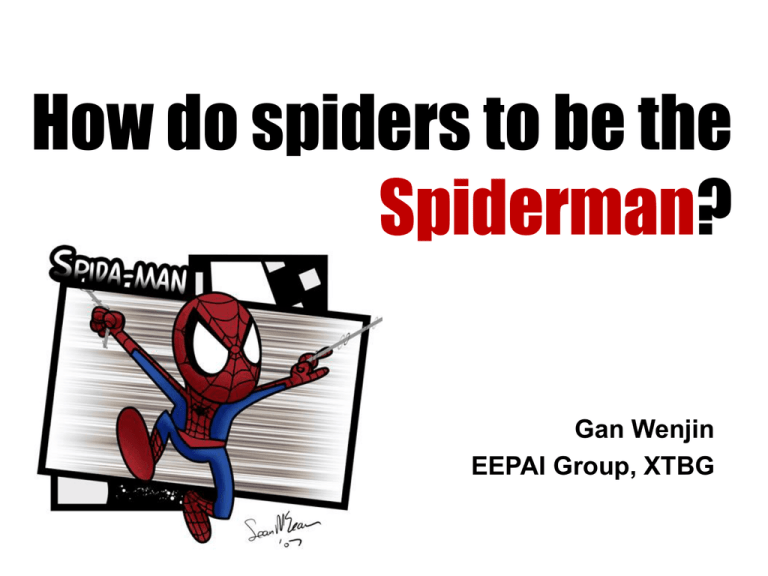
How do spiders to be the Spiderman? Gan Wenjin EEPAI Group, XTBG The Superpower of Spiderman Superstrength silk Acute vision Brilliant brain Adhesive web Vision (Lim & Daiqin Li, 2007) (DavidEdwin EdwinHill, Hill,2010) 2010) (David (Photographs by Ron Atkinson) (Lim & Daiqin Li, 2007) Silk SCIENCEphotoLIBRARY (Photographs by Ron Atkinson) How spiders spin webs of great strength? Stick thread (Ron Atkinson) What do spiders use their silk for? Web http://www.oocities.org/brisbane_spiders Orb-web Frame Diagram http://www.oocities.org/brisbane_spiders Brain Decoration-building Behavior Web-decorating behavior Spiral stabilimentum built by Cyclosa spider Cross-like stabilimentum spum by Argiope adults Vertical-linear stabilimentum produced by other Argiope species Silk-decoration built by same species (Photographs by Daiqin Li) Forms of web decorations (Herberstein et al. 2000) Web decorations by Cyclosa sp. Prey remains Silk Egg sacs Detritus Model system WHAT…? HOW WHY Self-secreted materials(SS) Egg sacs Molt Silk Cyclosa octotuberculata Collected materials(CO) Prey remains Bark Dry leaf Flower pedals Green leaf Fibers Materials (a) N =35 out of 200 Both: 18% SS: 11% N =11 out of 200 CO: 71% N =143 out of 200 2 = 132.4, df = 2, P < 0.0001 Patterns 2 =385.2, df=3, P<0.0001 Below 2% Discoid 5% Above 8% Linear 85% WHAT HOW…? Where Cyclosa spiders collect decorating materials to decorate their webs? WHY Experimental procedure 20 cm 20 cm 5 cm • Monitored the webs continuously for six days. • Variables recorded: 1. No. spiders decorating webs. 2. Mean No. pieces of paper used. 3. Mean decoration length. Mean decoration length (mm) Results 40 30 20 10 0 Bottom Web Both Bottom % leaf fragements used to decoration Adult Web Both Juvenile Fig.1 Mean ( s.e.) cumulative decoration length(mm) built by each experimental group of spiders at the end of experiment in day5. 100 80 60 40 20 0 Bottom Web Adult Both Bottom Web Juvenile Both Fig.2 Mean ( s.e.) cumulative number of dryleaf fragments used by each experimental group of spiders to decorate their webs in day5. WHAT HOW…? How Cyclosa spiders collect materials to decorate their webs? WHY Color Texture Number of scraps 8 7 6 5 4 3 2 1 0 Texture F3=1.686 P=0.174 F3=2.417 P=0.70 F3=1.062 P=0.368 Dry Green Plant Bark Dry Green Plant Bark Dry Green Plant Bark leaves leaves fibres leaves leaves fibres leaves leaves fibres Upper Overlap Below • Fig.3 Number of different positions of different textures fragments of web decorations built by spiders in the day5. • Effect of different color fragments on the web and decoration traits in day5: F3 = 0.038, P=0.990 (ANOVA) Weight Total number of spiders used scraps • Table 1 Effect of different weight fragments on the web and decoration traits in day5. Factor Weight Web and decoration F4 traits CA 0.7930 TTL 0.8859 MH 0.1276 Number of fragments 20.1639 35 30 25 20 15 10 5 0 P 0.5315 0.4741 0.9722 <0.001 • Fig.4 Total number of spiders used 5 different weight fragments in day5. 5×8 10×8 15×8 20×8 Mixed WHAT HOW WHY…? Plant detritus Fig. 5 Normalized reflectance spectra of Cyclosaoctotuberculat a spiders, decorations and vegetation backgrounds A cost of web decoration: predator-attraction The Super-organ of Spiders Superstrength silk Acute vision Brilliant brain Adhesive web Reference • • • • • • http://en.wikipedia.org/wiki/Spider http://www.oocities.org hhttp://www.arachnology.be/Arachnology.html http://www.findaspider.org.au Biology of Spiders, Folix, Oxford Express A Spider’s World: Senses and Behaviour, Barth, F.G., Springer-Verlag, Berlin • Animal behavior (9th edition), John Alcock Thank you!
